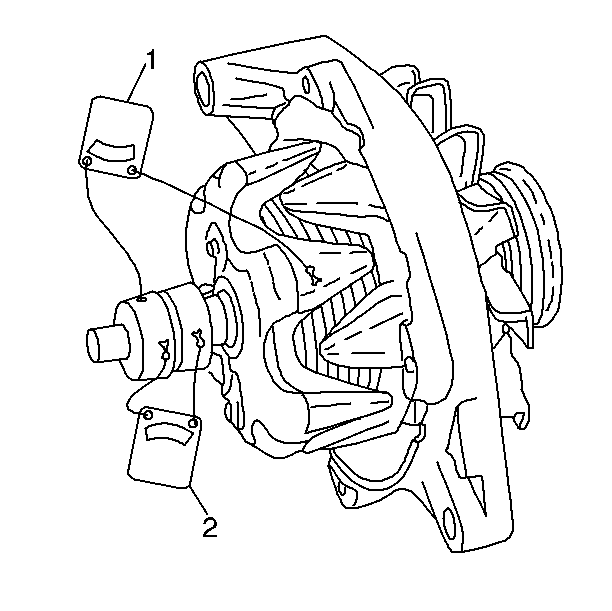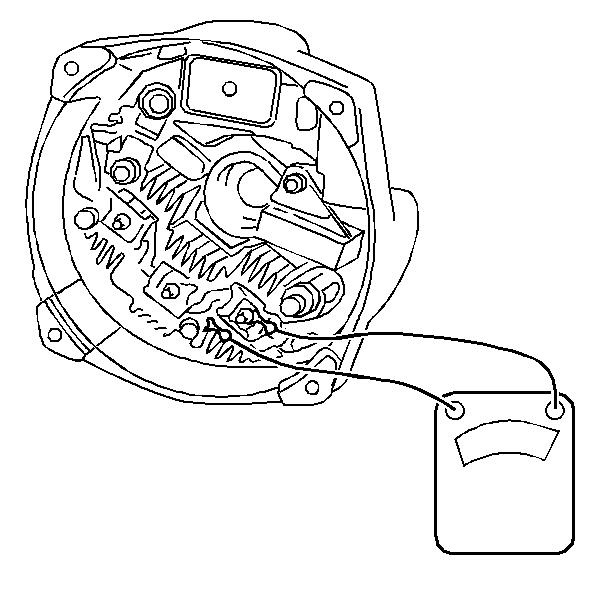Except as stated, make the following tests with an ohmmeter on the low range scale.
Rotor Field Winding Test

The rotor may be tested electrically with a self-powered test lamp or an ohmmeter.
Open Winding Test
To test for opens, connect the test lamp or ohmmeter to each slip ring. If the lamp fails to light, or if the ohmmeter reading is high (infinite), the winding is open. Replace the rotor.
Grounded Winding Test
Connect a test lamp or ohmmeter from one slip ring to the shaft. If the lamp lights, or if the reading is low, the rotor winding is grounded. Replace the rotor.
Short Circuit or Resistance Test
Test the winding for short circuits or excessive resistance by connecting a battery and ammeter in series with the edge of the two slip rings. Note the ammeter reading. An ammeter reading above the specified value indicates shorted windings.
An alternate method is to check the resistance of the field by connecting an ohmmeter to the two slip rings. If the resistance reading is above the specified value, the winding has excessive resistance; if below the specified value, the winding is shorted. The specified resistance value can be determined by dividing the voltage by the current.
Remember that the winding resistance and ammeter readings will vary slightly with winding temperature. If the rotor is not defective, but the generator fails to supply rated output, the problem is in the rectifier bridge, stator, or regulator.
If the rotor fails any of the above checks, replace it.
Stator Test

Test the stator with a self-powered test lamp or an ohmmeter. If the ohmmeter reads low, or if the lamp turns when connected from any stator lead to bare metal on the stator frame, then the stator is grounded.
An ohmmeter cannot be used to test the delta stator for shorts or opens. Noticeable discoloration on the assembly usually indicates a problem in the stator windings.
Rectifier Bridge Test

To test the rectifier bridge, connect an ohmmeter to the grounded heat sink and one of the three terminals. Press down firmly on the flat metal clip. Observe the ohmmeter reading. Then, reverse the connections to the grounded heat sink and the same metal clips. If both readings are the same, replace the rectifier bridge. A good rectifier bridge will give one high and one low reading. Repeat this procedure between the grounded heat sink and the other two terminals, and between the insulated heat sink and each of the three terminals. This makes a total of six tests, with two readings taken for each test.
Some digital ohmmeters cannot be used to test diodes in the rectifier bridge. Consult the ohmmeter manufacturer to determine your ohmmeter capabilities.
Regulator
The regulator cannot be tested outside of the generator. If the rotor, stator, and rectifier bridge are OK, but the generator still produces more than 16 volts or does not produce within 15 amperes of the rated output during a generator output test, replace the regulator.
